Beko DNE 26000, DNE 26000 M, DNE 26000 S, DNE 26020, DNE 26020 S User manual [EN,LT,RU,SL]
...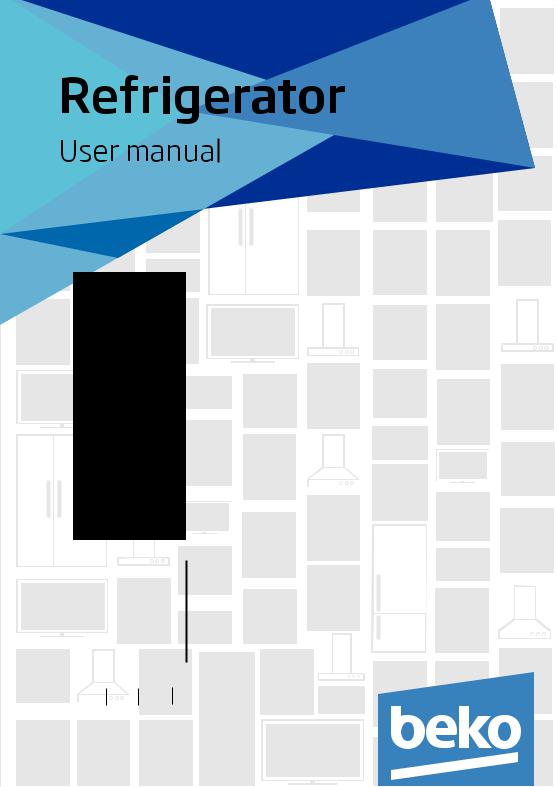
DNE 26000 |
DNE 26020 S |
DNE 26000 M |
DNE26000P |
DNE 26000 S |
|
DNE 26020 |
|
EN LT RU SL |
|
Please read this user manual first!
Dear Customer,
We hope that your product, which has been produced in modern plants and checked under the most meticulous quality control procedures, will provide you an effective service.
Therefore, read this entire user manual carefully before using the product and keep it as a reference. If you handover the product to someone else, give the user manual as well.
The user manual will help you use the product in a fast and safe way.
•Read the manual before installing and operating the product.
•Make sure you read the safety instructions.
•Keep the manual in an easily accessible place as you may need it later.
•Read the other documents given with the product.
Remember that this user manual is also applicable for several other models. Differences between models will be identified in the manual.
Explanation of symbols
Throughout this user manual the following symbols are used:
CImportant information or useful tips.
AWarning against dangerous conditions for life and property. BWarning against electric voltage.

CONTENTS
1 Your refrigerator |
3 |
2 Important Safety |
|
Warnings |
4 |
Intended use...................................... |
4 |
General safety................................... |
4 |
For products with a ........................... |
8 |
water dispenser;................................. |
8 |
Child safety........................................ |
9 |
Compliance with WEEE Directive and |
|
Disposing of the Waste Product: ....... |
9 |
Package information.......................... |
9 |
HC warning........................................ |
9 |
Things to be done for energy saving.10 |
|
Recommendations for the fresh food |
|
compartment................................... |
10 |
4 Preparation |
16 |
5 Using your refrigerator 17 |
|
Fridge compartment thermostat setting |
|
button ............................................. |
17 |
Making ice........................................ |
18 |
Dual cooling system:........................ |
18 |
Freezing fresh food........................... |
18 |
Freezer compartment thermostat |
|
setting button .................................. |
18 |
Deep-freeze information................... |
19 |
Recommendations for preservation of |
|
frozen food....................................... |
20 |
Defrosting........................................ |
20 |
Placing the food............................... |
20 |
3 Installation |
11 |
Points to be paid attention to when the |
|
relocation of the refrigerator.............. |
11 |
Electrical connection........................ |
11 |
Disposing of the packaging.............. |
12 |
Disposing of your old refrigerator...... |
12 |
Placing and Installation..................... |
12 |
Adjusting the legs............................. |
13 |
Door Open Warning......................... |
13 |
Changing the illumination lamp ........ |
13 |
Reversing the doors......................... |
14 |
Reversing the doors......................... |
15 |
6 Maintenance and |
21 |
cleaning |
Protection of plastic surfaces .......... 21
7 Troubleshooting |
22 |
2 EN

1 Your refrigerator
131 
*2 


3 


*4 
5 
4 


144 
6 


*7


8
*9
*12
10
*11
11
11
*12
1. |
Freezer compartment shelf |
8. |
Adjustable legs |
2. |
Ice container |
9. |
Freezer compartment door shelf |
3. |
Fridge compartment temperature |
10. |
Egg tray |
|
setting button |
11. |
Fridge compartment door shelf |
4. |
Adjustable body shelves |
12. |
Key |
5. |
Illumination lens |
13. |
Freezer compartment |
6. |
Crisper cover |
14. |
Fridge compartment |
7. |
Crisper |
* OPTIONAL |
|
Figures that take place in this instruction manual are schematic and may not correspond exactly with your product. If the subject parts are not included in the product you have purchased, then it is valid for other models.
3 EN

|
Important Safety Warnings |
|
2 |
||
Please review the following |
required information and |
|
information. Failure to |
authorized bodies. |
|
observe this information |
• Consult your authorized |
|
may cause injuries |
service for all your |
|
or material damage. |
questions and problems |
|
Otherwise, all warranty and |
related to the refrigerator. |
|
reliability commitments will |
Do not intervene or let |
|
become invalid. |
someone intervene to |
|
The service life of your |
the refrigerator without |
|
product is 10 years. During |
notifying the authorised |
|
this period, original spare |
services. |
|
parts will be available |
• For products with a |
|
to operate the product |
freezer compartment; |
|
properly. |
Do not eat cone ice |
|
Intended use |
cream and ice cubes |
|
This product is intended |
immediately after you |
|
to be used |
take them out of the |
|
• indoors and in closed |
freezer compartment! |
|
areas such as homes; |
(This may cause frostbite |
|
• in closed working |
in your mouth.) |
|
environments such as |
• For products with a |
|
stores and offices; |
freezer compartment; |
|
• in closed accommodation |
Do not put bottled |
|
areas such as farm |
and canned liquid |
|
houses, hotels, pensions. |
beverages in the |
|
• It should not be used |
freezer compartment. |
|
outdoors. |
Otherwise, these may |
|
General safety |
burst. |
|
• When you want to |
• Do not touch frozen food |
|
dispose/scrap the |
by hand; they may stick |
|
product, we recommend |
to your hand. |
|
you to consult the |
• Unplug your refrigerator |
|
authorized service |
before cleaning or |
|
in order to learn the |
defrosting. |
|
4 EN

•Vapor and vaporized cleaning materials should never be used in cleaning and defrosting processes of your refrigerator. In such cases, the vapor may get in contact with the electrical parts and cause short circuit or electric shock.
•Never use the parts on your refrigerator such as the door as a means of support or step.
•Do not use electrical devices inside the refrigerator.
•Do not damage the parts, where the refrigerant is circulating, with drilling or cutting tools. The refrigerant that might blow out when the gas channels of the evaporator, pipe extensions or surface coatings are punctured causes skin irritations and eye injuries.
•Do not cover or block the ventilation holes on your refrigerator with any material.
•Electrical devices must be repaired by only authorised persons. Repairs performed by incompetent persons create a risk for the user.
•In case of any failure or during a maintenance or repair work, disconnect your refrigerator’s mains supply by either turning off the relevant fuse
or unplugging your appliance.
•Do not pull by the cable when pulling off the plug.
•Ensure highly alcoholic beverages are stored securely with the lid fastened and placed upright.
•Never store spray cans containing
flammable and explosive substances in the refrigerator.
•Do not use mechanical devices or other means to accelerate the defrosting process, other than those recommended by the manufacturer.
5 EN

•This product is not intended to be used by persons with physical, sensory or mental disorders or unlearned or inexperienced people (including children) unless they are attended by a person who will
be responsible for their safety or who will instruct them accordingly for use of the product
•Do not operate a damaged refrigerator. Consult with the service agent if you have any concerns.
•Electrical safety of your refrigerator shall be guaranteed only if the earth system in your house complies with standards.
•Exposing the product to rain, snow, sun and wind is dangerous with respect to electrical safety.
•Contact authorized service when there is a power cable damage to avoid danger.
•Never plug the refrigerator into the wall outlet during installation. Otherwise, risk of death or serious injury may arise.
•This refrigerator is intended for only storing food items. It must not be used for any other purpose.
•Label of technical specifications is located on the left wall inside the refrigerator.
•Never connect your refrigerator to electricitysaving systems; they may damage the refrigerator.
•If there is a blue light on the refrigerator, do not look at the blue light with optical tools.
•For manually controlled refrigerators, wait for at least 5 minutes to start the refrigerator after power failure.
•This operation manual should be handed in to the new owner of the product when it is given to others.
6 EN

•Avoid causing damage on power cable when transporting the refrigerator. Bending cable may cause fire. Never place heavy objects on power cable. Do not touch the plug with wet hands when plugging the product
•Do not plug the refrigerator if the wall outlet is loose.
•Water should not be sprayed on inner or outer parts of the product for safety purposes.
•Do not spray substances containing inflammable gases such as propane gas near the refrigerator to avoid fire and explosion risk.
•Never place containers filled with water on top of the refrigerator; in the event of spillages,
this may cause electric shock or fire.
•Do not overload the refrigerator with food. If overloaded, the food
items may fall down and hurt you and damage refrigerator when you open the door.
•Never place objects on top of the refrigerator; otherwise, these objects may fall down when you open or close the refrigerator’s door.
•As they require a precise temperature, vaccines, heat-sensitive medicine and scientific materials and etc. should not be kept in the refrigerator.
•If not to be used for a long time, refrigerator should be unplugged. A possible problem in power cable may cause fire.
•The plug’s tip should be cleaned regularly with a dry cloth; otherwise, it may cause fire.
•Refrigerator may move if adjustable legs are not properly secured on the floor. Properly securing
7 EN

adjustable legs on the floor can prevent the refrigerator to move.
•When carrying the refrigerator, do not hold it from door handle. Otherwise, it may be snapped.
•When you have to place your product next to another refrigerator or freezer, the distance between devices should be at least 8cm. Otherwise, adjacent side walls may be humidified.
•The product shall never be used while the compartment which is located at the top or back of your product and in which electronic boards are available (electronic board box cover) (1) is open.
1 |
1
For products with a water dispenser;
•Pressure for cold water inlet shall be maximum 90 psi (6.2 bar). If your water pressure exceeds 80 psi (5.5 bar), use a pressure limiting valve in your mains system. If you do not know how to check your water pressure, ask for the help of a professional plumber.
•If there is risk of water hammer effect in your installation, always use a water hammer prevention equipment in your installation. Consult Professional
plumbers is you are not sure that there is no
8 EN
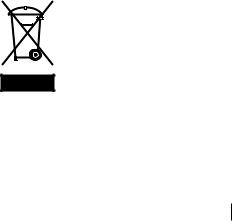
water hammer effect in your installation.
•Do not install on the hot water inlet. Take precautions against of the risk of freezing of the hoses. Water temperature operating interval shall be 33°F (0.6°C) minimum
and 100°F (38°C) maximum.
•Use only potable water.
Child safety
•If the door has a lock, the key should be kept away from reach of children.
•Children must be supervised to prevent them from tampering
with the product.
Compliance with WEEE Directive and Disposing of the Waste Product:
This product complies
with EU WEEE Directive (2012/19/EU). This product
bears a classification symbol for waste electrical and electronic equipment
(WEEE).
This product has been manufactured with high quality parts and materials which can be reused and are suitable for recycling. Therefore, do not dispose the product with normal domestic
waste at the end of its service life. Take it to a collection point for the recycling of electrical and electronic equipment. Please consult your local authorities
to learn the nearest collection point. Help protect the environment and natural resources by recycling used products. For children’s safety, cut the power cable and break the locking mechanism of the door, if any, so
that it will be non-functional before disposing of the product.
Package information
Packaging materials of the product are manufactured from recyclable materials in accordance with our National Environment Regulations. Do not dispose of the packaging materials together with the domestic or other wastes. Take them to the packaging material collection points designated by the local authorities.
Do not forget...
Any recycled substance is an indispensable matter for nature and our national asset wealth.
If you want to contribute to the re-evaluation of the packaging materials, you can consult to your environmentalist organizations or the municipalities where you are located.
HC warning
If your product's cooling system contains R600a:
This gas is flammable. Therefore, pay attention to not damaging the cooling system and piping during usage and transportation. In the event of damage, keep your product away from potential fire sources that can cause the product catch a fire and ventilate the room in which the unit is placed.
9 EN

Recommendations for the fresh food compartment
*optional
Do not allow the food to touch the temperature sensor in fresh food compartment. To allow the fresh food compartment keep its ideal storage temperature, sensor must not be hindered by food.
Do not place hot foods in the product.
Ignore this warning if your product's cooling system contains R134a.
Type of gas used in the product is stated in the type label which is on the left wall inside the refrigerator.
Never throw the product in fire for disposal.
Things to be done for energy saving
•Do not leave the doors of your refrigerator open for a long time.
•Do not put hot food or drinks in your refrigerator.
•Do not overload your refrigerator so that the air circulation inside of it is not prevented.
•Do not install your refrigerator under direct sunlight or near heat emitting appliances such as ovens, dishwashers or radiators. Keep your refrigerator at least 30cm away from heat emitting sources and at least 5cm from electrical ovens.
•Pay attention to keep your food in closed containers.
•For products with a freezer compartment; You can store maximum amount of food items in the freezer when you remove the shelf or drawer of the freezer. Energy consumption value stated for your refrigerator has been determined
by removing freezer shelf or drawer and under maximum load. There is no harm to use a shelf or drawer
according to the shapes and size of food to be frozen.
•Thawing frozen food in fridge compartment will both provide energy saving and preserve the food quality.
10 EN
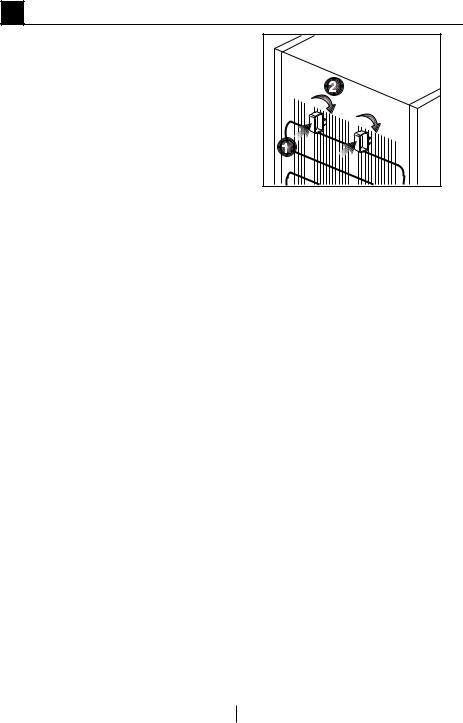
3 Installation
B In case the information which are given in the user manual are not taken into account, manufacturer will
not assume any liability for this.
Points to be paid attention to when the relocation of the refrigerator
1.Your refrigerator should be unplugged.Before transportation of your refrigerator, it should be emptied and cleaned.
2.Before it is re-packaged, shelves, accessories, crisper, etc. inside your refrigerator should be fixed with adhesive tape and secured against impacts. Package should
be bound with a thick tape or sound ropes and the transportation rules on the package should be strictly observed.
3.Original packaging and foam materials should be kept for future transportations or moving.
Before you start the refrigerator,
Check the following before you start to use your refrigerator:
1.Attach 2 plastic wedges as illustrated below. Plastic wedges are intended to keep the distance which will ensure the air circulation between your refrigerator and the wall. (The picture is drawn up as a representation and it is not identical with your product.)
2.Clean the interior of the refrigerator as recommended in the “Maintenance and cleaning” section.
3.Connect the plug of the refrigerator to the wall socket. When the fridge door is opened, fridge internal lamp will turn on.
4.When the compressor starts to operate, a sound will be heard. The liquid and gases sealed within the refrigeration system may also give rise to noise, even if the compressor is not running and this is quite normal.
5.Front edges of the refrigerator may feel warm. This is normal. These areas are designed to be warm to avoid condensation.
Electrical connection
Connect your product to a grounded socket which is being protected by a fuse with the appropriate capacity.
Important:
The connection must be in compliance with national regulations.
•The power plug must be easily accessible after installation.
•Electrical safety of your refrigerator shall be guaranteed only if the earth system in your house complies with standards.
•The voltage stated on the label located at left inner side of your product should be equal to your network voltage.
11 EN

•Extension cables and multi plugs must not be used for connection.
B A damaged power cable must be replaced by a qualified electrician.
B Product must not be operated before it is repaired! There is the risk of
electric shock!
Disposing of the packaging
The packing materials may be dangerous for children. Keep the packing materials out of the reach of children or dispose of them by
classifying them in accordance with the waste instructions stated by your local authorities. Do not throw away with regular house waste, throw away on packaging pick up spots designated by the local authorities.
The packing of your refrigerator is produced from recyclable materials.
Disposing of your old refrigerator
Dispose of your old refrigerator without giving any harm to the environment.
•You may consult your authorized dealer or waste collection center of your municipality about the disposal of your refrigerator.
Before disposing of your refrigerator, cut out the electric plug and, if there are any locks on the door, make them inoperable in order to protect children against any danger.
Placing and Installation
A If the entrance door of the room where the refrigerator will be installed is not wide enough for the refrigerator to pass through, then call the authorized service to have them remove the doors of your refrigerator and pass it sideways through the door.
1.Install your refrigerator to a place that allows ease of use.
2.Keep your refrigerator away from heat sources, humid places and direct sunlight.
3.There must be appropriate air ventilation around your refrigerator in order to achieve an efficient operation. If the refrigerator is to be placed in a recess in the wall, there must be at least 5 cm distance with the ceiling and at least 5 cm with the wall. Do not place your product on the materials such as rug or carpet.
4.Place your refrigerator on an even floor surface to prevent jolts.
12 EN

Adjusting the legs
If your refrigerator is unbalanced;
You can balance your refrigerator by turning its front legs as illustrated in the figure. The corner where the leg exists is lowered when you turn in the direction of black arrow and raised when you turn in the opposite
direction. Taking help from someone to slightly lift the refrigerator will facilitate this process.
Door Open Warning
(This feature is optional)
An audio warning signal will be given when the door of your product is left open for at least 1 minute. This
warning will be muted when the door is closed or any of the display buttons (if any) are pressed.
* OPTIONAL
Changing the illumination lamp
To change the Bulb/LED used for illumination of your refrigerator, call your AuthorisedService.
The lamp(s) used in this appliance is not suitable for household room
illumination. The intended purpose of this lamp is to assist the user to place foodstuffs in the refrigerator/freezer in a safe and comfortable way.
The lamps used in this appliance have to withstand extreme physical conditions such as temperatures below -20 °C.
(only chest and upright freezer)
13 EN
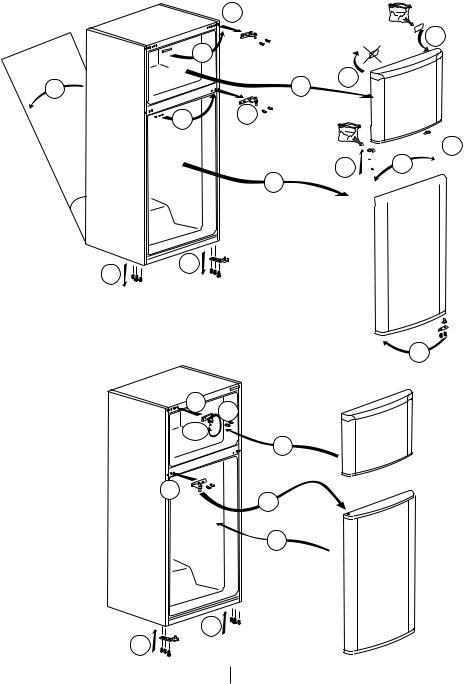
Reversing the doors
Proceed in numerical order
|
4 |
|
11 |
|
5 |
7 |
2 |
6 |
1 |
 12
12
 14
14  3
3 

60¡
8 |
9 |
|
15
|
19 |
18 |
|
180¡ |
|
|
21 |
|
|
|
|
22 |
|
20 |
|
|
|
|
|
21 |
17
16
14 EN
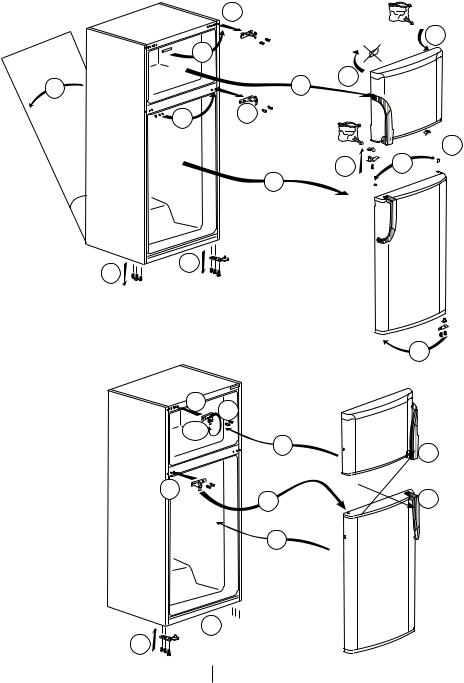
Reversing the doors
Proceed in numerical order
4
 11
11
5
7 |
2 |
6 1
 12
12
14
3
60°
8 |
9 |
|
15
|
19 |
18 |
|
|
|
|
|
|
180° |
21 |
|
|
|
23 |
|
|
|
|
|
22 |
|
20 |
23 |
|
|
||
|
|
21 |
|
17 



16
15 EN

4 |
Preparation |
|
|
• |
Your cooler/freezer should be |
°C, frozen food in the freezer does |
|
installed at least 30 cm away from |
|||
not thaw thanks to its Advanced |
|||
heat sources such as hobs, ovens, |
|||
Electronic Temperature Control |
|||
central heater and stoves and at least |
|||
System. For the first installation, the |
|||
5 cm away from electrical ovens and |
|||
product should NOT be placed under |
|||
should not be located under direct |
|||
low ambient temperatures. This is |
|||
sunlight. |
|||
because the freezer cannot go down |
|||
• Please make sure that the interior |
|||
to standard operation temperature. |
|||
of your cooler/freezer is cleaned |
|||
When reaching continuous operation, |
|||
thoroughly. |
|||
the product can be moved to |
|||
• If two coolers are to be installed side |
|||
another place. Thus, later you can |
|||
by side, there should be at least 2 cm |
|||
place your product in the garage |
|||
distance between them. |
|||
or an unheated room without the |
|||
• When you operate your cooler/freezer |
|||
concern of causing frozen food to |
|||
for the first time, please observe the |
|||
get rotten. However, it is likely that |
|||
following instructions during the initial |
|||
above mentioned low temperatures |
|||
six hours. |
|||
may cause the freezing of the food in |
|||
• Its door should not be opened |
|||
the fridge compartment; thus, please |
|||
frequently. |
|||
consume the food items in the fridge |
|||
• It must be operated empty without |
|||
in a controlled way as needed. When |
|||
placing any food in it. |
|||
ambient temperature goes back |
|||
• Do not unplug your cooler/freezer. |
|||
to normal, you may change button |
|||
If a power failure occurs out of your |
|||
setting according to your need. |
|||
control, please see the warnings in |
|||
• If the ambient temperature is below |
|||
the “Recommended solutions for the |
|||
problems” section. |
0°C, the food in fridge compartment |
||
will freeze. Therefore, we recommend |
|||
• The baskets/drawers that are |
|||
not using the fridge compartment |
|||
provided with the chill compartment |
|||
in such low ambient temperatures. |
|||
must always be in use for low energy |
|||
You may continue to use the freezer |
|||
consumption and for better storage |
|||
compartment as usual. |
|||
conditions. |
|||
• In some models, the instrument panel |
|||
• Food contact with the temperature |
|||
automatically turns off 5 minutes |
|||
sensor in the freezer compartment |
|||
after the door has closed. It will |
|||
may increase energy consumption of |
|||
be reactivated when the door has |
|||
the appliance. Thus any contact with |
|||
opened or pressed on any key. |
|||
the sensor(s) must be avoided. |
|||
• Due to temperature change as a |
|||
• This product has been designed to |
|||
result of opening/closing the product |
|||
function at ambient temperatures |
|||
door during operation, condensation |
|||
up to 43 °C (90 SDgrF). Even if the |
|||
on the door/body shelves and the |
|||
ambient temperature falls to -15 |
|||
glass containers is normal. |
|||
|
|
||
16 EN

5 Using your refrigerator
Fridge compartment thermostat setting button
Thermostat button allows you to make the general temperature setting of your refrigerator.
Thermostat button of the refrigerator controls both the temperature
of the freezer compartment and the amount of the air send to the fridge compartment and thus, the temperature of the fridge compartment.
At regular room temperatures:
Set the thermostat button to a position between “2 and 3” to store your food.
At high room temperatures:
5 |
4 |
3 |
Thermostat button must be set to a cooler position if the food is going to be frozen or large amounts of food will be loaded.
If the food in the fridge compartment
cools too much or freezes, thermostat button must be set to position “1”.
If the fridge compartment is colder then the required 24 hours after the initial startup, open the lower door and turn the fridge compartment temperature setting button towards to the position “1” and if it is warmer then the required, slightly turn it towards to the position “5”.
17 EN

Freezer compartment thermostat setting button
Freezer compartment setting button can be set to a position between Normal and Quick Freezing.
•In Normal position, the amount of the air sent to the fridge compartment reaches to maximum.
•In Quick Freezing position, the amount of the air sent to the freezer compartment reaches to maximum. And the amount of the air sent to the fridge compartment decreases to minimum. In this case, the temperature of the fridge compartment will increase. This is normal.
•If you do not need more cooling in either of the compartments, leave the setting button in Normal position.
•In cases where the room temperature is high (25 °C and above), it is suggested to set the freezer compartment setting button to a position near the Normal.
•In low room temperatures, it is suggested to set the freezer
compartment setting button to a position between the Normal and Quick Freezing.
Making ice
*optional
Fill the ice container with water and place it into the freezer compartment. Your ice will be ready approximately in two hours.
You can remove the ice in the ice container by removing it from the freezer and twisting it.
Dual cooling system:
Your refrigerator is equipped with two separate cooling systems to cool the fresh food compartment and freezer compartment. Thus, air in the fresh food compartment and freezer compartment do not get mixed. Thanks to these two separate cooling
systems, cooling speed is much higher than other refrigerators. Odors in the compartments do not get mixed. Also additional power saving is provided since the defrosting is performed individually.
Freezing fresh food
•Wrap or cover the food before placing them in .
•Hot food must cool down to the room temperature before putting them in the refrigerator.
•The foodstuff that you want to freeze must be fresh and in good quality.
•Foodstuff must be divided into portions according to the family’s daily or meal based consumption needs.
•Foodstuff must be packaged in an airtight manner to prevent them from drying even if they are going to be kept for a short time.
18 EN

•Materials to be used for packagings must be resistant to cold and humidity and they must be airtight. The packaging material of the food must be at a sufficient thickness and durability. Otherwise the food hardened due to freezing may puncture the packaging. It is important for the packaging to be closed securely for safe storage of the food.
•Frozen food must be used immediately after they are thawed and they should never be re-frozen.
•Please observe the following instructions to obtain the best results. 1. If the fridge has a quick freeze function, activate the quick freeze function when you want to freeze the food.
2. Do not freeze too large quantities of food at one time. The quality of the food is best preserved when it is frozen right through to the core as quickly as possible.
3. Take special care not to mix already frozen food and fresh food. 4. Make sure raw foods are not in contact with cooked foods in the fridge.
Deep-freeze information
Food must be frozen as rapidly as possible when they are put in the freezer in order to keep them in good quality.
It is possible to preserve the food for a long time only at -18°C or lower temperatures.
You can keep the freshness of food for many months (at -18°C or lower temperatures in the deep freeze).
WARNING! A
•Foodstuff must be divided into portions according to the family’s daily or meal based consumption needs.
•Foodstuff must be packaged in an airtight manner to prevent them from drying even if they are going to be kept for a short time.
Materials necessary for packaging:
•Cold resistant adhesive tape
•Self-adhesive label
•Rubber rings
•Pen
Materials to be used for packaging the foodstuff must be tear-proof and resistant to cold, humidity, dour, oils and acids.
Foodstuff to be frozen should not be allowed to come in contact with the previously frozen items to prevent their partial thawing. Thawed out food must be consumed and must not be frozen again.
19 EN

|
Freezer |
Fridge |
|
Remarks |
|
|
|
|
Compartment |
Compartment |
|
|
|
||
|
Setting |
Setting |
|
|
|
|
|
|
|
|
|
|
|||
|
-18°C |
4°C |
|
This is the normal recommended setting. |
|||
|
-20, -22 or |
4°C |
|
These settings are recommended when the |
|||
|
-24°C |
|
ambient temperature exceeds 30°C. |
||||
|
|
|
|||||
|
|
|
|
Use when you wish to freeze your food in a |
|||
|
Quick Freeze |
4°C |
|
short time. If is recommended to be used |
|||
|
|
to maintain the quality of meat and fish |
|||||
|
|
|
|
||||
|
|
|
|
products. |
|
|
|
|
|
|
|
|
|||
|
|
|
|
If you think that your fridge compartment |
|||
|
-18°C or |
2°C |
|
is not cold enough because of the hot |
|||
|
colder |
|
conditions or frequent opening and closing of |
||||
|
|
|
|||||
|
|
|
|
the door. |
|
|
|
|
|
|
|
|
|||
|
|
|
|
You can use it when your fridge compartment |
|||
|
-18°C or |
|
|
is overloaded or if you wish to cool down |
|||
|
Quick Fridge |
|
your food rapidly. It is recommended that you |
||||
|
colder |
|
|||||
|
|
|
activate the quick freeze function 4-8 hours |
||||
|
|
|
|
||||
|
|
|
|
before placing the food. |
|||
|
Recommendations for |
|
Placing the food |
||||
preservation of frozen food |
|
|
|
|
|||
• Pre-packed commercially frozen |
|
|
|
|
|||
|
Freezer |
Various frozen food |
|
||||
food should be stored in accordance |
|
|
|||||
|
such as meat, |
|
|||||
with the frozen food manufacturer's |
|
compartment |
|
||||
|
fish, ice cream, |
|
|||||
instructions in a frozen food storage |
|
shelves |
|
||||
|
vegetables and etc. |
|
|||||
compartment. |
|
|
|
|
|
||
|
|
|
Egg section |
Egg |
|
||
• To ensure that the high quality |
|
|
|||||
|
|
|
|
||||
supplied by the frozen food |
|
Fridge |
Food in pans, |
|
|||
manufacturer and the food retailer is |
|
|
|||||
|
compartment |
covered plates and |
|
||||
maintained, following points should |
|
|
|||||
|
shelves |
closed containers |
|
||||
be noted: |
|
|
|
|
|||
|
|
|
|
|
|
||
|
|
|
|
|
|
||
1.Put packages in the freezer as |
|
Door shelves |
Small and packaged |
|
|||
quickly as possible after purchase. |
|
food and drinks |
|
||||
|
of fridge |
|
|||||
2.Ensure that contents of the package |
(such as milk, fruit |
|
|||||
compartment |
|
||||||
are labeled and dated. |
|
juice and beer) |
|
||||
|
|
|
|||||
3. Do not exceed "Use By", "Best |
|
|
|
|
|||
|
|
|
|
||||
Before" dates on the packaging. |
|
Crisper |
Vegetables and fruits |
|
|||
Defrosting |
|
|
|
|
|
|
|
|
|
|
|
Delicatessen |
|
||
The freezer compartment defrosts |
|
|
|
||||
|
Freshzone |
products (cheese, |
|
||||
automatically. |
|
|
|
|
|||
|
|
|
compartment |
butter, salami and |
|
||
|
|
|
|
|
|
||
|
|
|
|
|
|
etc.) |
|
20 EN

6 Maintenance and cleaning
A Never use gasoline, benzene or similar substances for cleaning purposes.
B We recommend that you unplug the appliance before cleaning.
B Never use any sharp abrasive instrument, soap, household cleaner, detergent and wax polish for cleaning.
CUse lukewarm water to clean the cabinet of your refrigerator and wipe it dry.
CUse a damp cloth wrung out in a solution of one teaspoon of
bicarbonate of soda to one pint of water to clean the interior and wipe it dry.
B Make sure that no water enters the lamp housing and other electrical items.
B If your refrigerator is not going to be used for a long period of time, unplug the power cable, remove all food, clean it and leave the door ajar.
CCheck door seals regularly to ensure they are clean and free from food particles.
A To remove door racks, remove all the contents and then simply push the door rack upwards from the base.
ANever use cleaning agents or water that contain chlorine to clean the outer surfaces and chromium coated parts of the product. Chlorine causes corrosion on such metal surfaces.
A Do not use sharp, abrasive tools, soap, household cleaning agents, detergents, kerosene, fuel oil, varnish etc. to prevent removal and deformation of the prints on the plastic part. Use lukewarm water and a soft cloth for cleaning and then
wipe it dry.
Protection of plastic surfaces
CDo not put the liquid oils or oil-cooked meals in your refrigerator in unsealed containers as they damage the plastic surfaces of your refrigerator. In case of spilling or smearing oil on the plastic surfaces, clean and rinse the relevant part of the surface at once with warm water.
21 EN
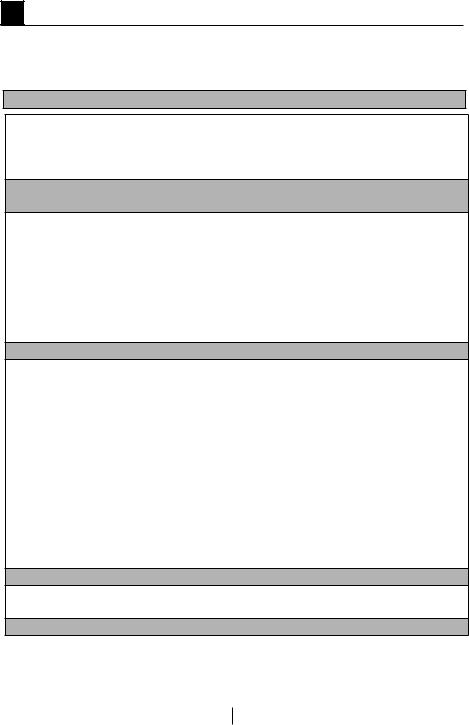
7 Troubleshooting
Please review this list before calling the service. It will save your time and money. This list includes frequent complaints that are not arising from defective workmanship or material usage. Some of the features described here may not exist in your product.
The refrigerator does not operate.
•The plug is not inserted into the socket correctly. >>>Insert the plug into the socket securely.
•The fuse of the socket which your refrigerator is connected to or the main fuse have blown out. >>>Check the fuse.
Condensation on the side wall of the fridge compartment (MULTIZONE, COOL CONTROL and FLEXI ZONE).
•Door has been opened frequently. >>>Do not open and close the door of refrigerator frequently.
•Ambient is very humid. >>>Do not install your refrigerator into highly humid places.
•Food containing liquid is stored in open containers. >>>Do not store food with liquid content in open containers.
•Door of the refrigerator is left ajar. >>>Close the door of the refrigerator.
•Thermostat is set to a very cold level. >>>Set the thermostat to a suitable level.
•Compressor is not running
•Protective thermic of the compressor will blow out during sudden power failures or plug-out plug-ins as the refrigerant pressure in the cooling system of the refrigerator has not been balanced yet. The refrigerator will start running
approximately after 6 minutes. Please call the service if the refrigerator does not startup at the end of this period.
•The fridge is in defrost cycle. >>>This is normal for a full-automatically defrosting refrigerator. Defrosting cycle occurs periodically.
•The refrigerator is not plugged into the socket. >>>Make sure that the plug is fit into the socket.
•Temperature settings are not made correctly. >>>Select the suitable temperature value.
•There is a power outage. >>>Refrigerator returns to normal operation when the power restores.
The operation noise increases when the refrigerator is running.
•The operating performance of the refrigerator may change due to the changes in the ambient temperature. It is normal and not a fault.
The refrigerator is running frequently or for a long time.
22 EN
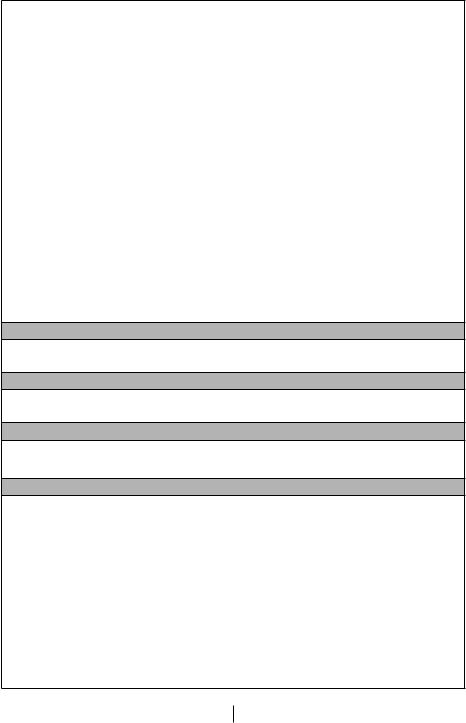
•New product may be wider than the previous one. Larger refrigerators operate for a longer period of time.
•The room temperature may be high. >>>It is normal that the product operates for longer periods in hot ambient.
•The refrigerator might be plugged in recently or might be loaded with food.
>>>When the refrigerator is plugged in or loaded with food recently, it will take longer for it to attain the set temperature. This is normal.
•Large amounts of hot food might be put in the refrigerator recently. >>>Do not put hot food into the refrigerator.
•Doors might be opened frequently or left ajar for a long time. >>>The warm air that has entered into the refrigerator causes the refrigerator to run for longer periods. Do not open the doors frequently.
•Freezer or fridge compartment door might be left ajar. >>>Check if the doors are closed completely.
•The refrigerator is adjusted to a very low temperature. >>>Adjust the refrigerator temperature to a warmer degree and wait until the temperature is achieved.
•Door seal of the fridge or freezer may be soiled, worn out, broken or not properly seated. >>>Clean or replace the seal. Damaged/broken seal causes the refrigerator to run for a longer period of time in order to maintain the current temperature.
Freezer temperature is very low while the fridge temperature is sufficient.
•The freezer temperature is adjusted to a very low value. >>>Adjust the freezer temperature to a warmer degree and check.
Fridge temperature is very low while the freezer temperature is sufficient.
•The fridge temperature is adjusted to a very low value. >>>Adjust the fridge temperature to a warmer degree and check.
Food kept in the fridge compartment drawers is frozen.
•The fridge temperature is adjusted to a very high value. >>>Adjust the fridge temperature to a lower value and check.
Temperature in the fridge or freezer is very high.
•The fridge temperature is adjusted to a very high value. >>>Fridge compartment temperature setting has an effect on the temperature of the freezer. Change the temperatures of the fridge or freezer and wait until the relevant compartments attain a sufficient temperature.
•Doors are opened frequently or left ajar for a long time. >>>Do not open the doors frequently.
•Door is ajar. >>>Close the door completely.
•The refrigerator is plugged in or loaded with food recently. >>>This is normal. When the refrigerator is plugged in or loaded with food recently, it will take longer for it to attain the set temperature.
•Large amounts of hot food might be put in the refrigerator recently. >>>Do not put hot food into the refrigerator.
23 EN

•Vibrations or noise.
•The floor is not level or stable. >>> If the refrigerator rocks when moved slowly, balance it by adjusting its feet. Also make sure that the floor is strong enough to carry the refrigerator, and level.
•The items put onto the refrigerator may cause noise. >>>Remove the items on top of the refrigerator.
There are noises coming from the refrigerator like liquid flowing, spraying, etc.
•Liquid and gas flows occur in accordance with the operating principles of your refrigerator. It is normal and not a fault.
Whistle comes from the refrigerator.
•Fans are used in order to cool the refrigerator. It is normal and not a fault. Condensation on the inner walls of refrigerator.
•Hot and humid weather increases icing and condensation. It is normal and not a fault.
•Doors are opened frequently or left ajar for a long time. >>>Do not open the doors frequently. Close them if they are open.
•Door is ajar. >>>Close the door completely.
Humidity occurs on the outside of the refrigerator or between the doors.
•There might be humidity in the air; this is quite normal in humid weather. When the humidity is less, condensation will disappear.
Bad odour inside the refrigerator.
•No regular cleaning is performed. >>>Clean the inside of the refrigerator regularly with a sponge, lukewarm water or carbonate dissolved in water.
•Some containers or package materials may cause the smell. >>>Use a different container or different brand packaging material.
•Food is put into the refrigerator in uncovered containers. >>>Keep the food in closed containers. Microorganisms spreading out from uncovered containers can cause unpleasant odours.
•Remove the foods that have expired best before dates and spoiled from the refrigerator.
The door is not closing.
•Food packages are preventing the door from closing. >>>Replace the packages that are obstructing the door.
•The refrigerator is not completely even on the floor. >>>Adjust the feet to balance the refrigerator.
•The floor is not level or strong. >>>Make sure that the floor is level and capable to carry the refrigerator.
Crispers are stuck.
• The food is touching the ceiling of the drawer. >>>Rearrange food in the drawer.
24 EN
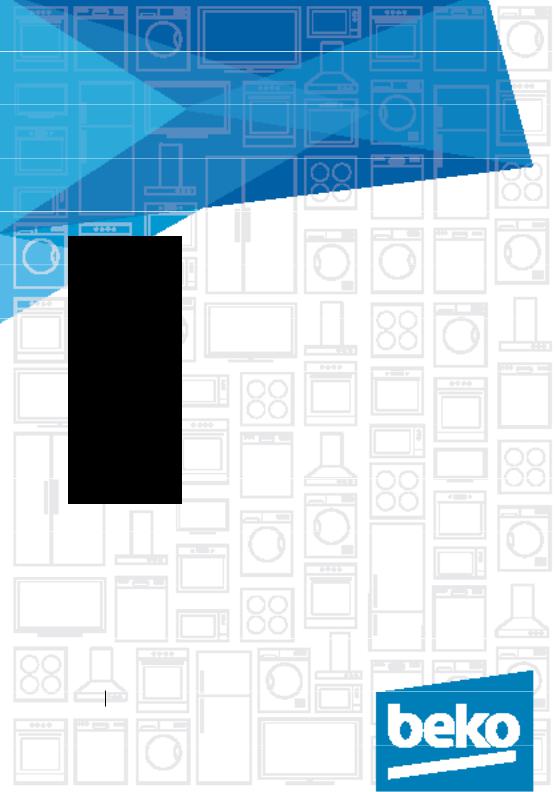
Šaldytuvas
Vartotojo vadovas
LT
Pirmiausia įdėmiai perskaitykite šį vadovą!
Gerbiamas pirkėjau,
Mes tikimės, kad mūsų gaminys, kuris buvo sukurtas moderniose gamyklose ir kruopščiai patikrintas pagal griežtus kokybės kontrolės reikalavimus, veiksmingai ir ilgai jums tarnaus.
Todėl mes rekomenduojame jums prieš naudojimą atidžiai perskaityti visą šio gaminio vartotojo vadovą ir išsaugoti jį, kad galėtumėte pasinaudoti juo ateityje.
Šis vadovas
•Padės jums greitai ir saugiai naudoti šį buitinį prietaisą.
•Prieš sumontuodami ir pradėdami naudoti šį gaminį, perskaitykite šį vadovą.
•Vadovaukitės nurodymais, ypač nurodymais dėl saugos.
•Laikykite šį vadovą lengvai pasiekiamoje vietoje, nes juo dar gali tekti pasinaudoti.
•Taip pat perskaitykite ir kitus su šiuo gaminiu pateiktus dokumentus.
Atkreipkite dėmesį, kad šis vadovas gali galioti ir kitiems modeliams.
Ženklai ir jų aprašymas
Šioje naudojimo instrukcijoje panaudoti tokie ženklai:
C Svarbi informacija arba naudingi patarimai dėl naudojimo.
AĮspėjimas dėl sveikatai pavojingų arba žalos turtui galinčių padaryti sąlygų.
BĮspėjimas dėl elektros įtampos.

TURINYS
1 Šaldytuvas |
3 |
2 Svarbūs įspėjimai dėl |
|
saugos |
4 |
Naudojimo paskirtis............................ |
4 |
Bendrieji saugos reikalavimai.............. |
4 |
Gaminiams su vandens dalytuvu;....... |
8 |
Vaikų sauga........................................ |
9 |
WEEE Direktyvos ir senų gaminių |
|
išmetimo taisyklių atitiktis: .................. |
9 |
RoHS direktyvos atitiktis:.................... |
9 |
Informacija apie pakuotę.................... |
9 |
HC įspėjimas...................................... |
9 |
Jeigu gaminyje įrengta aušinimo |
|
sistema, kurioje naudojama R600a: ... 9 |
|
Nepaisykite šio įspėjimo, jeigu gaminyje |
|
įrengta aušinimo sistema, kurioje |
|
naudojama R134a. ............................ |
9 |
Ką reikia daryti, norint sutaupyti |
|
energijos............................................ |
9 |
Patarimai dėp šviežio maisto skyriaus |
|
naudojimo........................................ |
10 |
3 Įrengimas |
11 |
Į ką reikia atsižvelgti vežant šį |
|
šaldytuvą.......................................... |
11 |
Prieš pradedant naudoti šaldytuvą.... |
11 |
Elektros prijungimas......................... |
11 |
Pakuotės išmetimas......................... |
11 |
Kojelių reguliavimas.......................... |
12 |
Apšvietimo lemputės pakeitimas ..... |
12 |
Seno šaldytuvo išmetimas................ |
12 |
Pastatymas ir instaliacija................... |
12 |
Durų perstatymas............................. |
13 |
Durų perstatymas............................. |
14 |
4 Paruošimas |
15 |
5 Šaldytuvo |
|
eksploatavimas |
16 |
Šaldytuvo skyriaus termostato |
|
nustatymo rankenėlė ....................... |
16 |
Šviežių maisto produktų užšaldymas.17 |
|
Šaldiklio skyriaus termostato |
|
nustatymo rankenėlė ....................... |
17 |
Ledukų gamyba............................... |
17 |
Užšaldytų maisto produktų saugojimo |
|
rekomendacijos................................ |
18 |
Informacija apie gilų užšaldymą........ |
18 |
Kokius maisto produktus galima dėti.19 |
|
6 Techninė priežiūra ir |
|
valymas |
20 |
Plastikinių paviršių apsauga ............. |
20 |
7 Rekomenduojami problemų sprendimo būdai21
2 LT
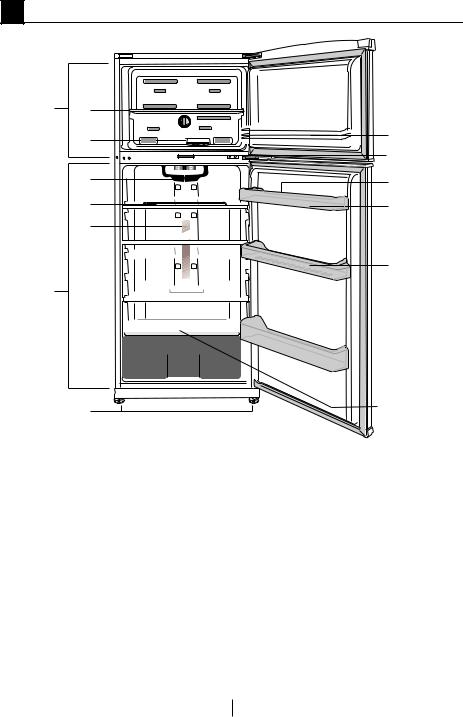
1 Šaldytuvas
13 1
*2
3 


*4
*9
*12
10
*11
5  4
4 

11
144 
6 


*7

 11
11
8 |
*12 |
|
1. |
Šaldiklio skyriaus lentynos |
8. |
Reguliuojamos kojelės |
|
2. |
Ledo konteineris |
|||
9. |
Šaldiklio skyriaus durų lentyna |
|||
3. |
Šaldytuvo skyriaus termostato nustatymo |
|||
10. |
Kiaušinių dėklas |
|||
|
rankenėlė |
|||
|
11. |
Šaldytuvo skyriaus durų lentyna |
||
4. |
Pritaikomos korpuso lentynos |
|||
12. |
Raktas |
|||
5. |
Apšvietimo lemputės |
|||
13. |
Šaldiklio skyrius |
|||
6. |
Stalčiaus daržovėms dangtis |
|||
14. |
Šaldytuvo skyrius |
|||
7. |
Daržovių dėtuvė |
|||
|
|
* PAPILDU PIEDERUMS
Šiame eksploatavimo vadove pateikti paveikslėliai yra orientacinio pobūdžio; gali būti, kad jie tiksliai nevaizduoja jūsų turimo gaminio. Jei jūsų turimame gaminyje nėra aprašomų dalių, tai reiškia, jog tai taikoma kitiems modeliams.
3 LT

2 Svarbūs įspėjimai dėl saugos
Prašome atidžiai perskaityti toliau pateiktą informaciją. Nepaisant šios informacijos, galima susižaloti arba padaryti žalos turtui. Tuomet nebegalios jokia garantija ir gamintojo įsipareigojimai.
Jūsų įsigytas prietaisas numatytas naudoti 10 metų. Šiuo laikotarpiu gamintojas įsipareigoja tiekti visas šiam prietaisui reikalingas atsargines dalis, kad prietaisas veiktų taip, kaip aprašyta šioje instrukcijoje.
Naudojimo paskirtis
Šis gaminys skirtas naudoti
–patalpose ir uždarose vietose, pavyzdžiui, namuose;
–uždaroje darbo aplinkoje, pavyzdžiui, parduotuvėse ir biuruose;
–uždarose apgyvendinimo vietose, pavyzdžiui, ūkininkų gyvenamuosiuose namuose, viešbučiuose, pensionuose. 4
• Šio gaminio negalima naudoti lauke.
Bendrieji saugos reikalavimai
•Kai šį gaminį norėsite išmesti arba atiduoti į metalo laužą, rekomenduojama pasikonsultuoti su
įgaliotomis tarnybomis ir institucijomis, kad sužinotumėte reikiamą informaciją.
•Jei kyla klausimų apie šaldytuvą arba atsiranda problemų, pasikonsultuokite su įgaliotais aptarnavimo specialistais. Šaldytuvo neardykite ir niekam neleiskite to daryti;
tai galima daryti tik apie tai pranešus įgaliotiems aptarnavimo specialistams.
•Gaminiams su šaldiklio kamera; Ledų ir ledo kubelių nevalgykite vos juos išėmę į šaldiklio kameros! (Galite nušalti burną.)
•Gaminiams su šaldiklio kamera; Į šaldiklio
LT
